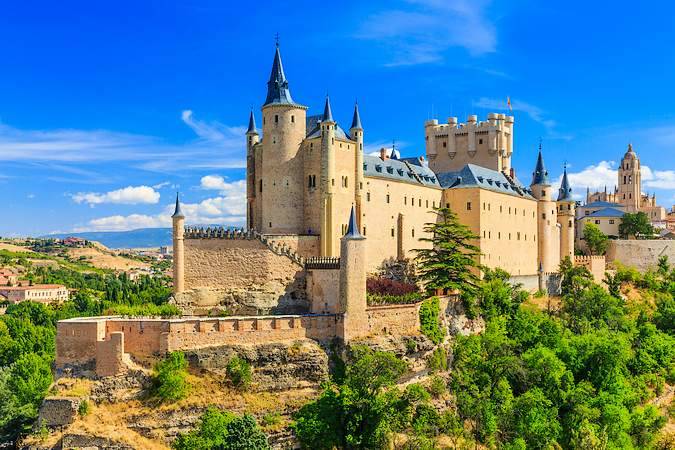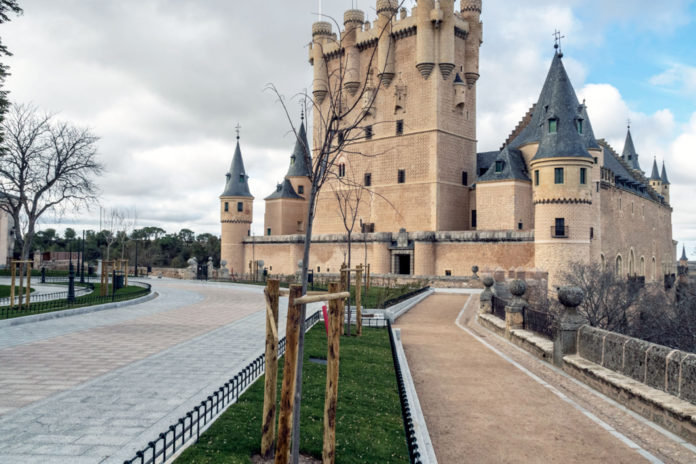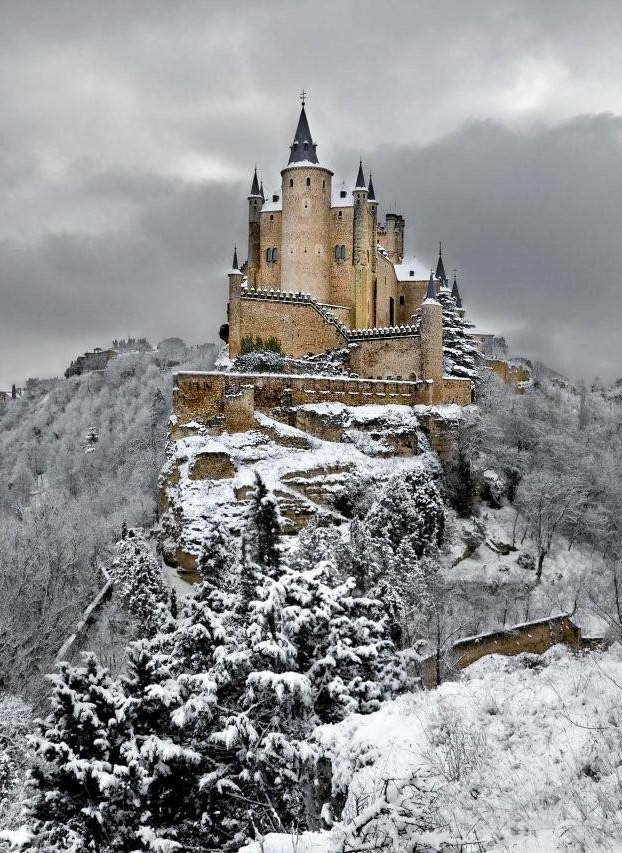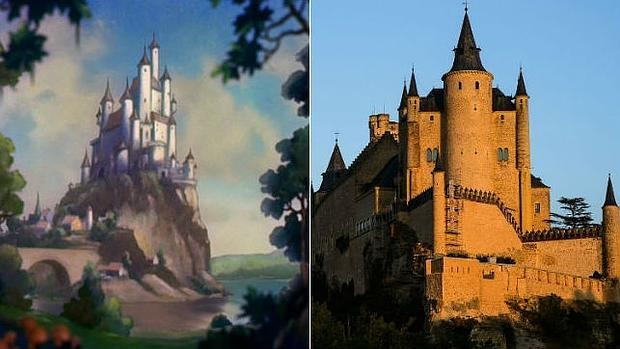
Rising out on a rocky crag above the confluence of two rivers near the Guadarrama mountains, it is one of the most distinctive castle-palaces in Spain. The alcázar was originally built to serve as a fortress but has served as a royal palace, a state prison, a Royal Artillery College, and a military academy since then. It is currently used as a museum and a military archives building.
Like many fortifications in Spain, started off as Roman but apart from the foundations, little of the original structure remains. A Muslim era fort, which was itself largely replaced by the present structure, was built by the Berber Almoravid dynasty. The first reference to this castle was in 1120, around 32 years after the city of Segovia was conquered by the Christians (during the time when King Alfonso VI reconquered lands to the south of the Duero river down to Toledo and beyond).
The shape and form of the Alcázar were not known until the reign of King Alfonso VIII (1155–1214), however early documentation mentioned a wooden stockade fence. It can be concluded that prior to Alfonso VIII's reign, the Muslim era structure was no more than a wooden fort built over the old Roman foundations. Alfonso VIII and his wife, Eleanor of England, made this alcázar their principal residence and much work was carried out to erect the beginnings of the stone fortification we see today.

The Alcázar of Segovia was one of the favourite residences of the monarchs of Castile in the Middle Ages and a key fortress in the defence of the kingdom. It was during this period that most of the current building was constructed by the Trastámara dynasty.
In 1258, parts of the Alcázar had to be rebuilt by King Alfonso X after a cave-in and the Hall of Kings was built to house Parliament soon after. However, the single largest contributor to the continuing construction of the Alcázar is King John II who built the "New Tower" (John II Tower as it is known today).

In 1474, the Alcázar played a major role in the rise of Queen Isabella I. On 12 December news of King Henry IV's death in Madrid reached Segovia and Isabella immediately took refuge within the walls of the Alcázar where she received the support of Andres Cabrera and Segovia's council. She was enthroned the next day as Queen of Castile and León.
The next major renovation at the Alcázar was conducted by King Philip II after his marriage to Anna of Austria. He added the sharp slate spires to reflect the castles of central Europe In 1587, architect Francisco de Morar completed the main garden and the School of Honor areas of the castle.

The Alcázar de Segovia has been used as filming locations in several films such as Orson Welles’s Chimes at Midnight (1965) and the Arthurian musical Camelot (1967), but its most distinctive significance in popular culture is noted for different reasons. In the 1937 Disney film Snow White and the Seven Dwarfs, the Wicked Queen’s castle was modelled after the Alcázar de Segovia, its architectural designs and hilltop location reflecting the original. Later on, Disney used the Alcázar inspiration again to design the Cinderella Castle, the symbolic fairytale castle of Disneyland.